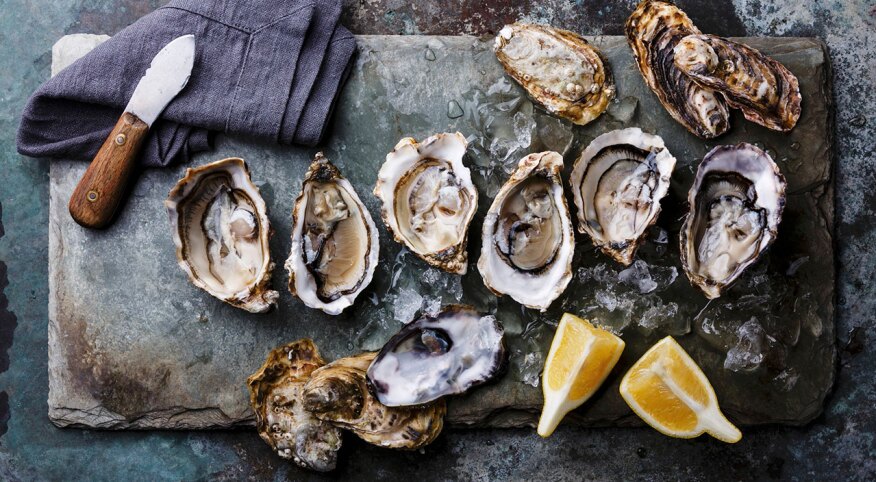Why does seafood always come with a side order of “but”?
“I know I should get more omega-3s, but I don’t know which fish have the most.” Or “I’d like to eat more seafood, but I don’t want to destroy the oceans.” Or “I know fish is good for me, but my doctor told me that I need to be careful about mercury.”
After 20 years of researching seafood, I can safely say that it is possible to chart a course through the shoal of buts. Here are five better seafood choices you can make right now.
1. Sockeye salmon, instead of farmed salmon Both wild and farmed salmon have high levels of Omega-3s and low levels of methylmercury, but the farmed salmon industry relies on the ecologically dubious practice of using billions of wild-caught small fish to feed their salmon. Sockeye is hands-down the more ethical choice. But you have to be careful not to overcook sockeye — just five minutes, skin side up, under a broiler will do. But once you get the hang of it, you’ll never go back.
2. Oysters on the half shell, instead of shrimp cocktail Shrimp are America’s number one seafood; indeed, of the 15-odd pounds of seafood we eat every year, 4 are shrimp. As a few deep-diving reporters have revealed, however, that shrimp cocktail you love can come to us in ways that involve slave labor, mangrove deforestation and collateral damage to bycaught “unwanted” species. Much better to choose oysters as your appetizer. A large portion of them are grown in the U.S. with an extremely low carbon footprint. The same goes for oyster’s kin, mussels.
3. The fish next Door, instead of the frequent flier The average piece of fish changes hands seven times and travels 6,000 miles before it reaches your plate. If that fish is airfreighted, the carbon cost is huge. This is a terrible on many fronts, not least of which is the fact that American fisheries are regarded internationally as the best managed in the world. But in the past 10 years, a local fish movement has gained momentum. “Community-supported fisheries” now abound. You can subscribe to a “CSF” for a year of locally caught seafood. Check out LocalCatch.org to find one near you.
4. Anchovies, instead of avoiding anchovies entirely A sad ocean fact is that most anchovies never end up on a human plate. The vast majority are fed to farmed salmon, chickens and other animals. Anchovies, while a bit strong for the American palate, are extremely high in omega-3s and extremely low in methylmercury. They can be folded into sauces or put onto a canapé; plus, they pair well with any number of strong flavors, including olives, capers and, frankly, martinis.
My favorite preparation is something called Two Can Sauce, which is a regular in our house. It is distinctly not fishy-tasting, making it something I can get past my seafood-averse son. Open the anchovy can and drain the oil into a medium-size saucepan; then add a tablespoon of olive oil. Place over low heat. Chop the anchovies and mince the garlic. Fry the garlic for about a minute, but don’t let it brown. Turn the heat off and add the anchovies. Work them into the oil with a wooden spoon until they dissolve. Turn the heat back on to medium. Empty the entire contents of the tomato can into the saucepan. Cook uncovered on low heat for 30 minutes; serve over whole wheat spaghetti.
5. The Filet-o-Fish, instead of that off-brand fish sandwich There’s good reason to choose the Filet-o-Fish over another sandwich. McDonald’s sources its fish largely from Alaska, using a creature called the walleye pollock — a fish that is abundant, sustainably certified by the Monterey Bay Aquarium, and low in methylmercury and other pollutants. It’s certainly a better choice than a burger. The carbon emissions of a Big Mac are significantly higher than that of the Filet-o-Fish.

StockFood




